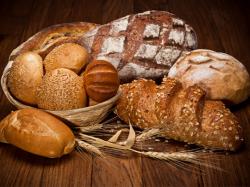The Role Of Sodium In Baked Grain Products
May 2, 2016 | 1 min to read

Food scientists today are challenged with achieving an optimum level of sodium in baked goods—such as breads, muffins, and crackers—that maintains food safety and extends shelf life, while at the same time meets sodium reduction targets and achieves desirable taste and texture for consumers.1
Food Preservation: A Balancing Act
Sodium plays an essential role in preserving baked grain products.2 Salt, by nature, reduces the amount of water activity in foods and thereby inhibits growth of undesirable microorganisms, such as mold and harmful bacteria.3 While the emergence of modern day refrigeration and other techniques to preserve food have curtailed the need to use salt for preservation, salt continues to be used extensively for extending the shelf life of products, and also for enhancing flavor and texture.4
“Food safety cannot be compromised,” says Janice Johnson, Ph.D., Technical Service at Cargill, when considering a reduction of sodium.5 Rather, when salt is reduced, other ingredients may need to be added or increased to compensate for the decrease in salt.6 The ideal formulation for a food product creates a desirable, stable, and safe product that keeps the growth of harmful microorganisms at bay.7 “The thing about salt is that it does so many things, that to pull it out and try to find another ingredient that has all of that functionality is impossible,” says Johnson.8
To read the rest of the story, please go to: Cargill Salt InPerspective™
